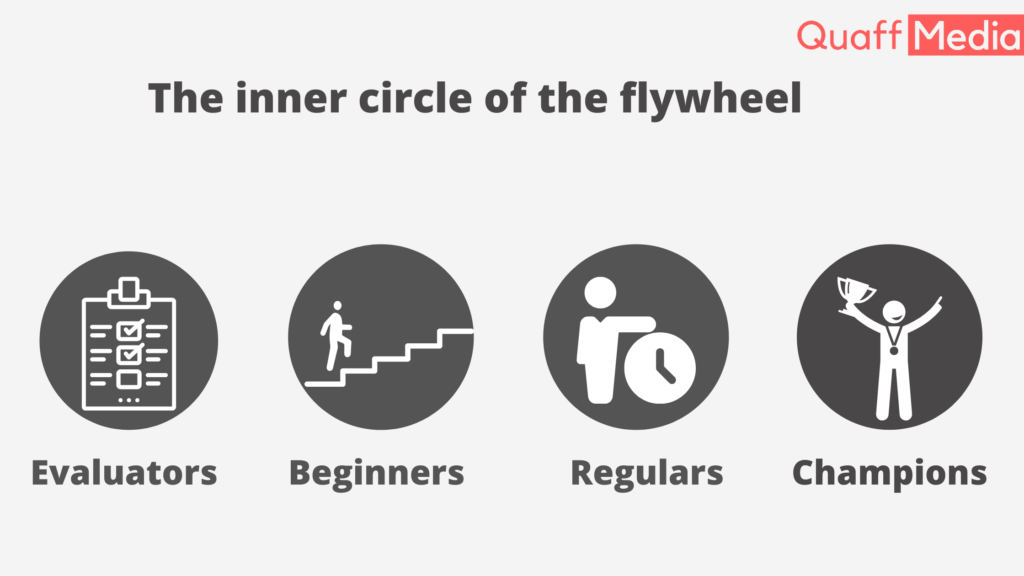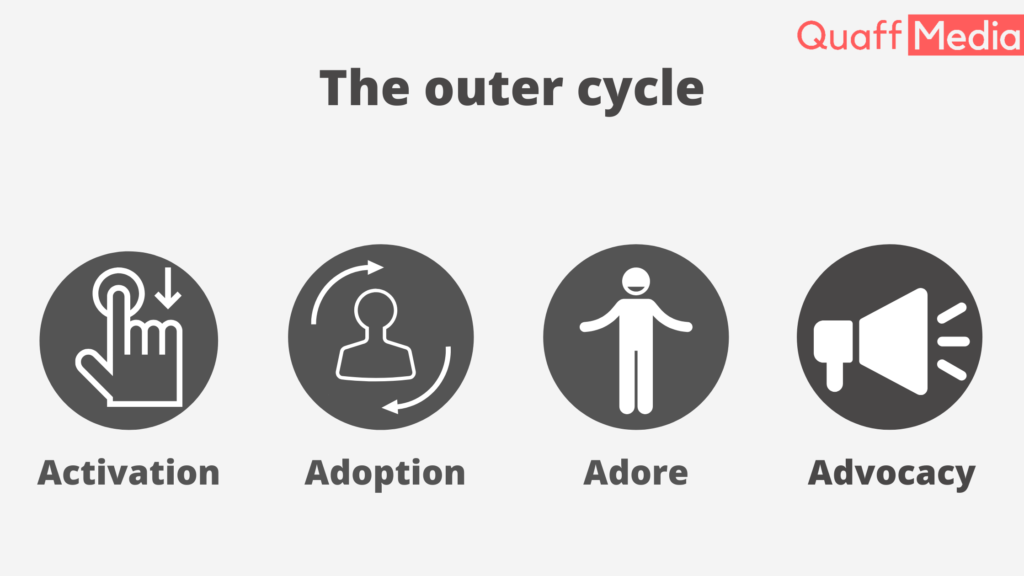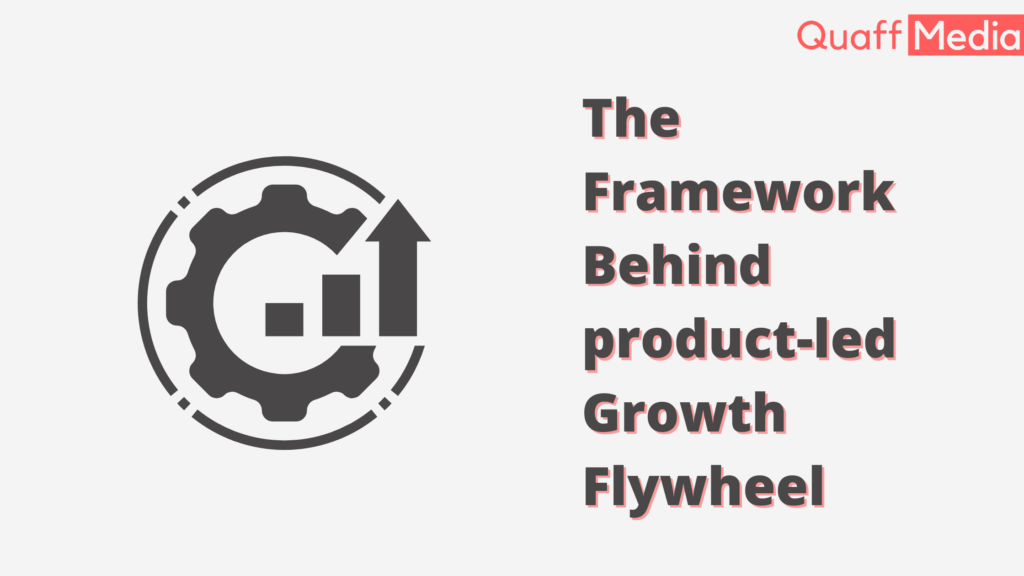Product-led growth flywheel is a framework that is used to grow your SaaS business. It involves investing in a product-led user experience.
Nowadays, companies are transforming the way they communicate with their users. Click To TweetThey are leading with the products rather than using marketing or sales.
Flywheel model is better than a sales funnel one, as it helps build momentum when going from one phase to another. It doesn’t leak customers along the way. In this blog, we will be discussing how this model can help align your company around customer success. Here is the list of topics covered in this blog if you want to read a specific one:
The inner circle of the flywheel
The inner circle of the product-led flywheel consists of four segments. These segments are:

Evaluators
The evaluators are the first stage of the user journey. They browse everything that your product can offer them. And they are excited about how that product can help solve their problem.
Evaluators are usually in the demo or trial phase. They don’t use your product in their existing workflow. They might also be searching for a SaaS solution for their problem.
Beginners
Beginners are those who understand the value that your product provides them and are excited about the product. It is the next stage in a user journey.
Beginners develop a deeper understanding of your product. And how to use that product effectively. Beginners might not be the paying customers, but they can be ready to leap.
Regulars
Regulars are the users who have adopted your product. They become the bread and butter for your user base. The engagement in the case of regulars is high as they may rely on your product for their multiple use cases.
Regulars are those who have invested their time, money, and effort and have developed a habit. Habits are hard to change. So, it would be costly for them to switch to other solutions.
Champions
Champions are the final segment of this model. They are the users who have actively invested in your success. thus, they want more power and capabilities from your product.
Champions are the users who recommend your product to others because they have developed an emotional connection with your brand. They might need customer support because they push the limit of your product. They also try advanced use cases that require deep knowledge.
The Outer circle
The outer circle of the product-led flywheel also consists of four categories. This circle corresponds to the user’s actions to graduate to the next stage of user acquisition. These stages are as follows:

Activation
For every company, activation is different. In short, it is the moment of excitement when any user discovers the solution to their problems.
Activation happens when any user understands and sees the value of your product. They want to spend their time and money by their will as they have seen that your product can be an asset for them.
Adoption
Adoption includes getting users and forming their habits to associate your product with any particular task or solution. Users who have adopted your product use it without thinking about it.
Production adoption generally means a full buy-in by the user. It happens when a user understands the power of your product and depends on it regularly.
Adore
It can be tricky to get a user to adore your product. The users who adore your product not only use it frequently. But enjoy using it as well. They use your product to accomplish their tasks and seek additional use cases.
Users who adore your product are very eager to provide feedback. It is your responsibility to provide them with a consistently delightful experience. Once the user starts to adore your product, they become champions which is the last stage of the flywheel framework.
Advocacy
Advocacy creates the flywheel effect in the flywheel model. Inviting other users to use the product, leaving a review of the products drives the necessary awareness and drives new evaluators to your product. Advocacy completes the cycle.
Champions can be moved to advocacy with a little nudge. It can be a private conversation between your team and the user. They may advocate new and creative features and solutions to the problems they might be facing.
There is very powerful social proof like third-party reviews and case studies of your products from successful users. This is a key product-led growth strategy.
Conclusion
Using the product-led flywheel framework creates a cross-team alignment. Each team needs to contribute to a product-led growth company.
The flywheel is a more powerful sales cycle than the funnel. In this, the champions can become advocates who share your product and rise new evaluators. This way the cycle starts again and keeps going again and again. This compounds your growth.

